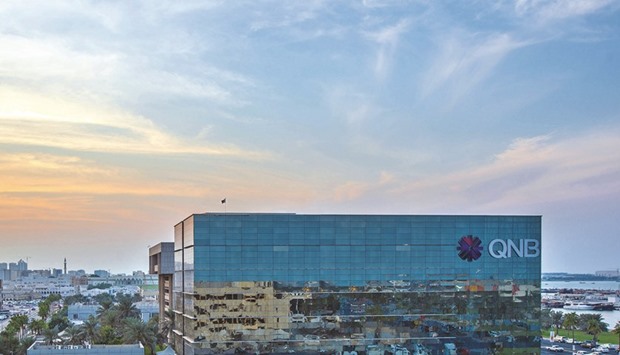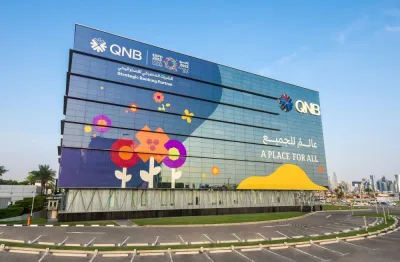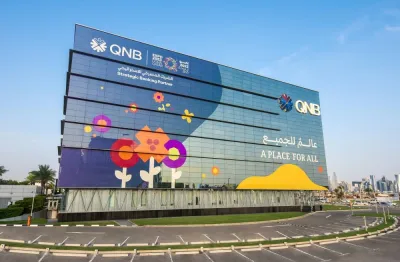Some Fed rate hikes may be expected this year, if the current relative calm in financial markets persists, QNB has said in an economic commentary.
After a tough start to the year, global financial markets have recovered strongly in recent weeks. Early in the year, a number of concerns plagued financial markets and pushed back expectations for increases in the US Federal Reserve’s (Fed) policy rate.
However, more recently, the alleviation of these concerns and a recovery in financial conditions means that the Fed is now more likely to press ahead with rate hikes.
Global financial markets struggled at the beginning of 2016: the MSCI world equity index fell 11.5% in the first six weeks of the year with the worst losses in China, down more than 20%; the US S&P index fell 10.5% over the same period; and oil prices fell 19.4% due to concerns about global demand and continued excess supply.
Markets were struck by a range of global economic concerns, QNB said.
First, in China, the devaluation of the renminbi and slowing growth raised the risk of further devaluations and runaway capital flight. Markets may also be concerned about the tail-risk of a full-blown balance of payments crisis. Second, a raft of negative data pointed to a slowdown in economic activity concentrated in the global manufacturing sector. Industrial production contracted in December in the world’s largest manufacturing hubs, the US, Japan and eurozone.
Q4 GDP growth collapsed to 0.7% in the US (later revised up to 1%) and -1.4% in Japan (later revised up to -1.1%).
Third, lower oil prices raised the risk of credit events among oil producers that could destabilise financial markets.
One significant result of the turmoil in financial markets was that the Fed backed off on its rhetoric around the next rate hike. In her testimony to Congress on February 10, Fed Chair Janet Yellen said that tightening financial conditions would need to be taken into account.
Market expectations for rate hikes were substantially revised down, with only an 11% chance of a rate hike priced into financial markets for the whole of 2016.
At that time QNB said the market reaction to the economic data and events was overdone.
“It does now appear that concerns about China and the global economy have eased. Global equity markets have recovered some ground from their lows,” QNB said.
The MSCI world equity index is now only 3.6% down for the year, the S&P is 2.7% down and oil prices are up 9.8%.
Meanwhile, Chinese equity markets are down 18.0% for the year. The Chinese authorities have reversed their exchange rate policy, letting the renminbi appreciate and calming capital flight concerns.
And, finally, GDP growth is now expected to rebound in Q1, 2016 in the US (2% consensus forecast) and Japan (1.2% consensus forecast).
Recent data also suggests that consumption in the US is beginning to pick up with stronger retail sales, consumption and consumer confidence data.
Two key data points for the Fed have also come in “stronger than expected” in the last two weeks, strengthening the case for the Fed to raise interest rates, QNB said.
First, core inflation rose to 1.7% in January, nearing the Fed’s 2% target and compared with expectations of 1.5%.
Second, non-farm payrolls came in much stronger than expected in February, keeping unemployment down at 4.9% and providing a further indication of the strength of the US labour market.
Futures markets have re-priced to incorporate the increased likelihood of a Fed rate hike. A hike on March 16 remains highly improbable given the recent financial turmoil and without more data to confirm the economy is back on track. However, current futures markets imply a 46% probability of a 25bps rate hike by June and 72% by December.
In a commentary in mid-February, QNB postulated that the Fed would press ahead with rate hikes if markets stabilised.
Now that global financial markets have stabilised, a rate hike this coming June does seem to be firmly back on the cards. In December, the Fed reckoned it would hike rates four times in 2016.
Markets now expect one hike by the end of the year, up from zero at the peak of the market turmoil.
“The truth is likely to be somewhere in the middle, so, if the current relative calm in financial markets persists, then we can expect two or three rate hikes this year,” QNB said.
QNB joins Harvard Business School’s ‘Leadership Development Programme’
QNB has recently participated in the Harvard Business School’s Leadership Development Programme for Banks, which was themed “Leading Strategy Implementation in the Banking Sector” and was targeted toward executive managers.
The programme consisted of two main axes – “Strategic Management” and “Leadership,” and witnessed the participation of a number of executive managers representing different departments in the bank.
Harvard Business School provides a special programme for the development of executive leaders from banks and financial institutions operating in the GCC countries. The programme is organised on a rotating basis each year in a Gulf country, with a plan to expand its scope regionally.
Nada al-Ansari, executive manager, QNB Centres of Excellence, said the programme is implemented in accordance with the high standards applied by Harvard Business School to these kinds of programmes in its US headquarters. Al-Ansari also explained that the programme is based on the study of practical situations, which the school is well-known for and that is being used by distinguished universities and training centres to develop the performance of executives around the world.
She added: “QNB’s participation in this programme comes in the framework of the group’s constant keenness to develop national cadres, particularly executive leadership. Developing the performance of national cadres in the bank will remain a top strategic priority due to the importance of this category in realising sustainable development.”
It is worth noting that, in light of the group’s ongoing international expansion, QNB believes it is important that the human resources capabilities and potential continue to meet the group’s growing operational requirements as it constantly works to find innovative means to develop programmes for current and new staff in order to ensure the provision of the best talents and cadres in Qatar and across its international footprint.

QNB


